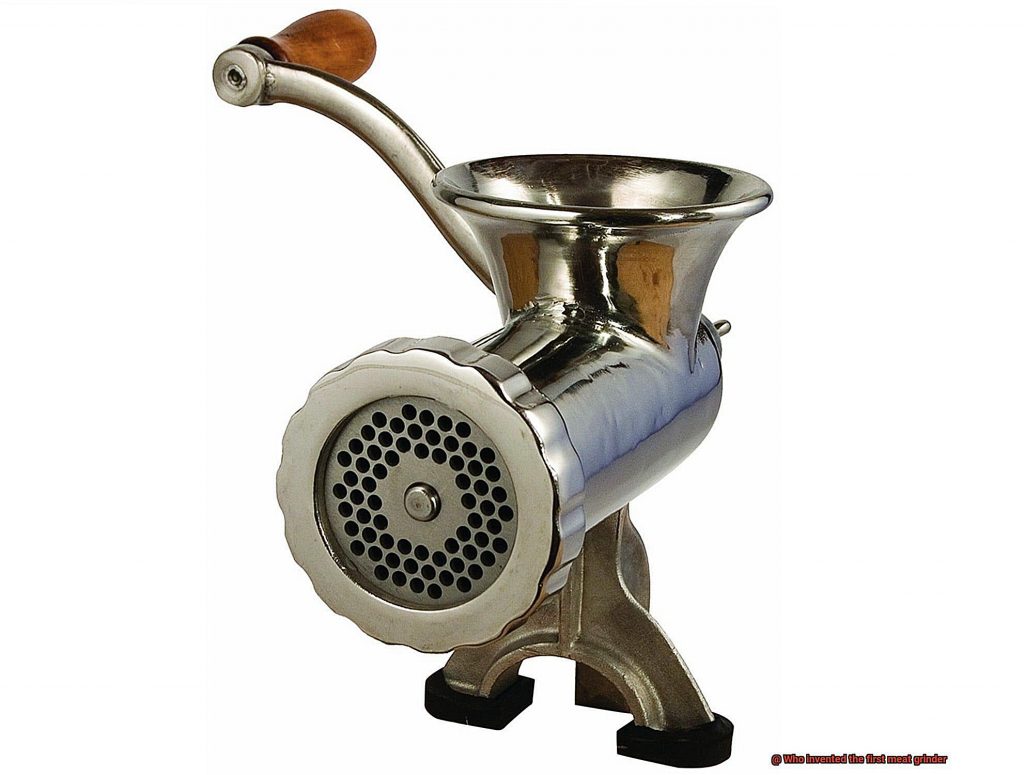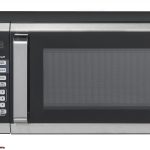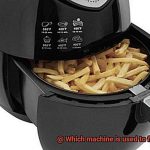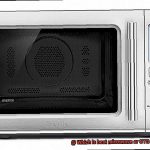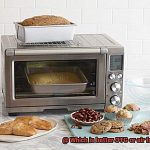Have you ever stopped to ponder who invented the meat grinder? It may seem like a trivial question, but the answer takes us on a fascinating journey through history, revealing not only the story of this essential kitchen tool but also the evolution of culinary technology.
The early 19th century was a time of growth and innovation in America. Industries were booming, and new inventions were popping up left and right. The first patent records for meat grinder designs date back to this era, with early models primarily used in commercial settings.
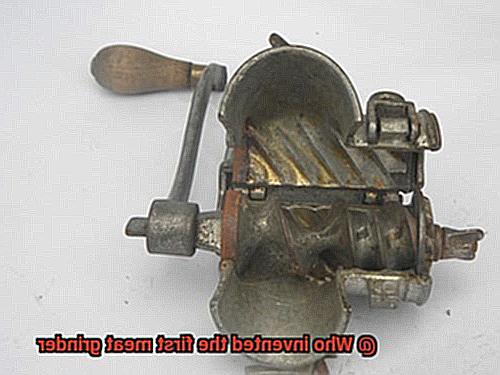
But who was responsible for creating the very first meat grinder? None other than Karl Drais, the creative genius behind the iconic bicycle. That’s right – Drais’ inventive mind didn’t stop at two wheels. He also designed a simple yet effective hand-cranked meat grinder that used a rotating blade to mince meat.
Join us on an exciting journey as we explore the intriguing history of the meat grinder. Learn how Drais’ invention set a benchmark in culinary history and revolutionized food preparation as we know it today. Stay tuned for more fascinating facts about this essential kitchen tool and its impact on our daily lives.
Contents
Karl Drais: The German Inventor of the 19th Century
Karl Drais was a brilliant inventor who lived in the 19th century, leaving an indelible mark on the world with his inventions. While he is best known for his creation of the draisine, which eventually led to the modern bicycle, Drais also contributed significantly to other fields, including meat processing.
In 1827, Drais invented a hand-cranked meat grinder that would change the way meat processing was done forever. This innovation allowed for faster and more consistent meat processing, laying the groundwork for large-scale production. But what makes Drais’ invention so special?
Adjustable Blade Spacing
Drais’ meat grinder design had a unique feature that allowed users to adjust the fineness of the grind by changing the spacing between the blades. This simple yet ingenious addition made it possible to create different textures of ground meat depending on its intended use – from coarse ground beef for burgers to fine ground pork for sausages. This innovation paved the way for further advancements in meat processing technology.
Consistency in Meat Processing
Before Drais’ invention, meat processing relied heavily on manual labor and knives for cutting and grinding meat. This process was slow and inconsistent, leading to variations in texture and quality. But with Drais’ invention, meat processing became faster and more reliable, leading to a higher quality end product.
Large-Scale Meat Production
Drais’ meat grinder was particularly useful for large-scale production of ground meat, which was difficult to achieve before his invention. Manual labor and tools were time-consuming and often resulted in inconsistencies in texture and quality. However, with Drais’ invention, large quantities of meat could be processed quickly and efficiently, making it possible to meet growing demand for ground meat.
Drais’ contribution to the meat processing industry was significant as his innovation helped revolutionize the industry. His design allowed for faster, more consistent meat processing and paved the way for further technological advancements in the field. Even today, we still use meat grinders in our kitchens and grill stations, a testament to the lasting impact of Drais’ innovation.
Johann Heinrich L. Fleischmann: The American Industrialist
Johann Heinrich L. Fleischmann, a German-American industrialist, played a pivotal role in changing the way meat was processed in the United States with his invention of the meat grinder. Born in Germany in 1815, Fleischmann emigrated to the United States in 1838 and settled in Cincinnati, Ohio, which was then a hub of the meatpacking industry.
In 1845, Fleischmann founded his own meatpacking company, which he named the Pioneer Steam Sausage Factory. The company quickly became successful, and Fleischmann spotted an opportunity to streamline the sausage-making process by inventing a machine that could grind meat more efficiently than by hand.
Fleischmann’s first meat grinder was a simple hand-cranked device that he patented in 184The machine consisted of a cylinder with a rotating blade inside that would chop up pieces of meat as they were fed through a hopper on top. The ground meat would then be expelled through a spout at the bottom of the cylinder.
The impact of Fleischmann’s invention was immediate and revolutionary. Prior to the invention of the meat grinder, butchers had to chop up meat by hand using knives and cleavers, which was time-consuming and labor-intensive. With Fleischmann’s machine, large quantities of meat could be processed quickly and efficiently, making it possible for butchers to keep up with growing demand.
Fleischmann’s dedication to innovation did not cease after his first invention. Over time, he continued to refine and improve his meat grinders, developing larger and more powerful machines that could handle even tougher cuts of meat. By the late 1800s, his company was one of the largest producers of meat grinders globally, with factories in both Ohio and Germany.
Today, Johann Heinrich L. Fleischmann is remembered as a pioneer of the American meatpacking industry and an innovator who helped to revolutionize the way meat is processed and prepared. His invention of the meat grinder has had a lasting impact on the food industry, making it possible for people all over the world to enjoy ground meat in a variety of different dishes.
Karl Friedrich Christian Ludwig Freiherr Drais von Sauerbronn: The German Engineer
Meet Karl Friedrich Christian Ludwig Freiherr Drais von Sauerbronn, the brilliant German inventor and engineer who not only revolutionized transportation devices like the bicycle and precursor to the modern-day motorcycle but also played a crucial role in the development of the meat grinder.
In 1814, Drais created the “universal meat chopper” or “Fleischwolf,” a hand-cranked device that rotated blades inside a hopper to cut meat into small pieces. Before his invention, grinding meat was a tedious task involving mortar and pestle or manual chopping. However, Drais’ invention allowed for faster and more consistent results, making it easier for people to prepare ground meat for cooking.
The universal meat chopper was an important innovation that quickly gained popularity in Germany and spread throughout Europe and beyond. Butchers and other food processing industries benefited greatly from Drais’ invention, which allowed them to prepare meat quickly and efficiently.
It’s easy to take our trusty meat grinders for granted today, but it all started with Drais’ brilliant mind. His contribution to the invention of the meat grinder may have been overshadowed by his other inventions, but its impact on how we prepare and consume meat cannot be overstated.
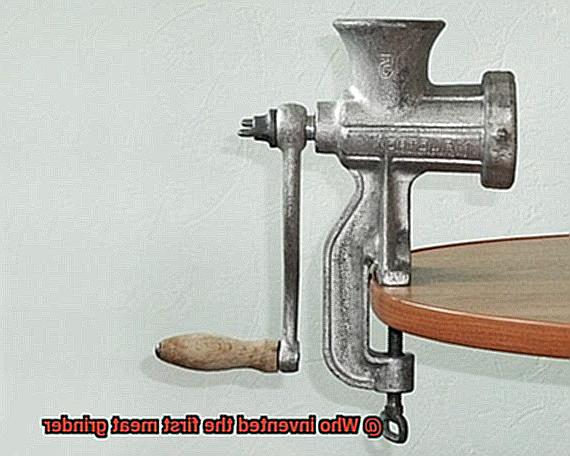
Who Invented the First Mechanical Meat Grinder?
Karl Drais, a German inventor and engineer, is widely credited with creating the first mechanical meat grinder. In 1827, Drais invented a cast iron device that featured a hand crank that turned a series of blades inside a cylinder. The cylinder had small holes in it that allowed the meat to be ground into small pieces as it was pushed through by the blades. Prior to this invention, butchers and home cooks had to grind meat by hand with a mortar and pestle or chopping knife, which was tedious and time-consuming.
Drais’ invention quickly gained popularity in the United States and Europe, revolutionizing the food industry. The mechanical meat grinder made it easier and more efficient for butchers and home cooks to grind meat, leading to wider availability of ground meat and the development of new recipes.
The popularity of Drais’ invention spurred other inventors to develop their own versions of the mechanical meat grinder. By the mid-19th century, meat grinders were widely used in homes and butcher shops around the world.
It’s worth noting that there were earlier versions of meat grinding machines that predate Drais’ invention. The ancient Romans and Greeks used manual meat grinders made of stone or metal plates with holes for grinding. Nevertheless, Drais’ creation played a significant role in the development of modern mechanical meat grinders.
Today, mechanical meat grinders come in various sizes and designs, from hand-cranked models to electric grinders that can process large quantities of meat quickly. They remain an essential tool in kitchens around the world.
How Has the Modern Meat Grinder Evolved?
Meat grinders have been around for centuries, but the modern meat grinder has undergone a remarkable evolution. The early versions were operated by hand, requiring significant effort to grind meat. However, with technological advancements, the process of grinding meat has become more comfortable and more efficient.
One of the most significant changes in the evolution of meat grinders is the shift towards electric-powered machines. These machines are now widely available and have made grinding meat faster and more convenient. Equipped with powerful motors, they can grind even the toughest cuts of meat in a matter of seconds. The ease of use and time-saving features of electric-powered machines make them popular among home cooks and professional butchers alike.
But that’s not all. Modern meat grinders come with a variety of attachments that allow users to perform different tasks. With these attachments, you can make delicious sausages, homemade pasta, and even slice vegetables with ease. Some of these attachments include sausage stuffing tubes, pasta makers, and vegetable slicers.
Furthermore, there has been a growing interest in using meat grinders for home use. Consumers are seeking high-quality machines that offer durability, ease of use, and a range of features. This has led to an increase in the number of manufacturers producing meat grinders for home use.
Benefits of Owning a Meat Grinder
Take control of your cooking and grilling game by investing in a meat grinder. As an expert on the benefits of owning a meat grinder, I can attest to the numerous advantages it offers.
Cost savings is a significant benefit of owning a meat grinder. Instead of buying expensive pre-ground meat, you can purchase whole cuts of meat and grind them yourself, saving money in the long run. Plus, you can customize your ground meat to suit your preferences.
Customization is another key advantage of owning a meat grinder. With this powerful tool, you have complete control over the fat content, texture, and flavor of your ground meat. You can even create unique blends of different meats and spices to take your cooking to the next level.
Freshness is also crucial when it comes to ground meat. By grinding your own meat, you ensure that it is fresh and hasn’t been sitting on a store shelf for days or even weeks.
For those who prioritize health benefits, owning a meat grinder provides peace of mind knowing that there are no added preservatives or fillers in your ground meat. This can be especially beneficial for those with allergies or dietary restrictions.
But wait, there’s more. Meat grinders aren’t just for grinding meat. They can also be used to grind vegetables and fruits, making them a versatile kitchen tool that will get plenty of use.
Different Types of Meat Grinders
Meat grinders are a versatile and essential tool for any home cook or professional chef. However, with so many different types of meat grinders available on the market, it can be overwhelming to choose the right one for your needs. Let’s explore the various types of meat grinders and their unique features.
Manual Meat Grinders
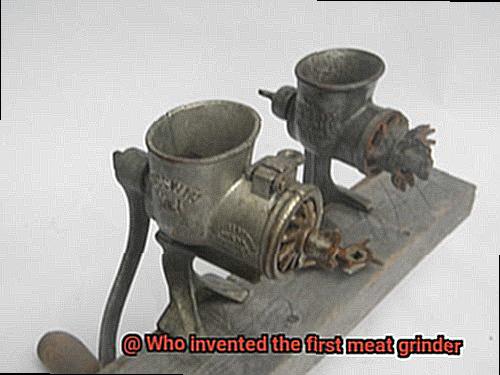
These traditional meat grinders have been around for centuries and are still popular today. With no need for electricity or battery power, manual meat grinders are operated by hand, making them perfect for people who want to grind small amounts of meat at home. They are also great for individuals who prefer a hands-on approach to cooking.
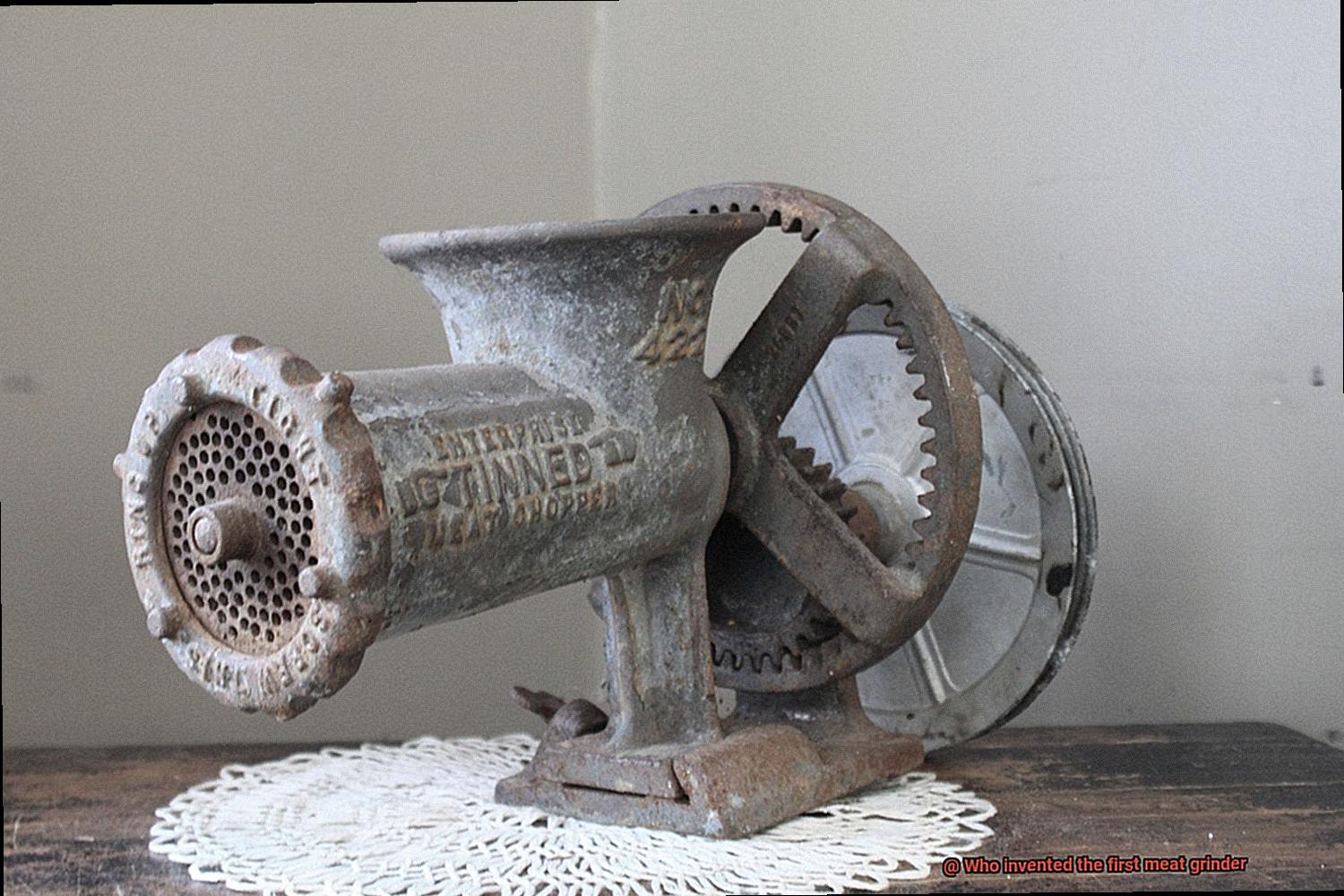
Electric Meat Grinders
Electric meat grinders have become increasingly popular in recent years due to their convenience and ease of use. Available in different sizes, these meat grinders can grind large quantities of meat in a short amount of time. Electric meat grinders are perfect for commercial use or for individuals who process a lot of meat at home and need a quick and efficient grinding process.
Commercial Meat Grinders
Designed for use in restaurants, butcher shops, and other commercial establishments, commercial meat grinders are powerful and can grind large quantities of meat quickly. They are perfect for heavy-duty use and can handle tough meats like beef and pork. Commercial grade meat grinders are ideal for butcher shops, supermarkets, and large restaurants that process a lot of meat.
Attachment Meat Grinders
These meat grinders attach to stand mixers or other kitchen appliances to grind meat, which makes them perfect for individuals who already own a stand mixer and don’t want to invest in a separate meat grinder. Attachment meat grinders are smaller than electric meat grinders but still efficient enough to handle small quantities of meat. They are suitable for home use and can grind various types of meats.
Specialty Meat Grinders
In addition to the above-mentioned types of meat grinders, there are also specialty meat grinders available, such as sausage stuffers. These types of meat grinders allow you to make your own sausages at home, which is perfect for individuals who want to experiment with different types of sausages.
How to Choose the Right Meat Grinder for Your Needs
If so, a meat grinder is an essential tool for your kitchen. But with so many options in the market, choosing the right one can be overwhelming. Here are some crucial factors to consider when selecting the perfect meat grinder for your needs:
Type of Meat Grinder
The first thing to consider is the type of meat grinder that you want. Manual meat grinders require elbow grease to crank the handle, and they are ideal for small quantities of meat. Electric meat grinders are faster and more efficient, but they can be more expensive. Attachment meat grinders are compatible with your existing kitchen appliances.
Type of Meat
Different types of meat have varying toughness levels, and this determines the power of the grinder you need. If you plan on grinding tougher meats like venison or pork shoulder, opt for a grinder with more horsepower and a larger feeding tube. For smaller cuts of meat or poultry, a smaller grinder will suffice.
Size of Grinder
Consider the amount of meat you plan on grinding at once and choose a grinder size accordingly. If you’re only grinding small quantities, a tabletop grinder will do. However, if you want to grind large amounts of meat, invest in a commercial-grade grinder.
Material the Grinder is Made From
The material used to make the grinder affects its durability and ease of cleaning. Stainless steel grinders are durable and easy to clean but can be more expensive than plastic or aluminum grinders. Consider how frequently you’ll use your grinder and your budget before making a decision.
Additional Features
Some grinders come with attachments for making sausages or grinding bones, while others have various grinding plates for different textures. These extra features add versatility to your grinder and make it even more useful for your needs.
W9HhB1v9j3A” >
Conclusion
In summary, the meat grinder has come a long way since its inception in the early 19th century. Karl Drais, the inventor of the bicycle, created the first hand-cranked meat grinder that revolutionized meat processing. Since then, numerous inventors have contributed to its evolution into an essential kitchen tool.
Today, meat grinders are available in various types and sizes, from manual to electric and commercial grade. These versatile machines come with different attachments that allow users to perform various tasks such as making sausages or grinding bones. Owning a meat grinder provides several benefits such as cost savings, customization of ground meat, freshness, and health advantages.
Choosing the right meat grinder requires considering factors such as type, size, material it’s made from, and additional features. Whether you’re a home cook or professional chef, investing in a quality meat grinder will pay off in the long run by providing fresh and customized ground meat for all your culinary creations.

